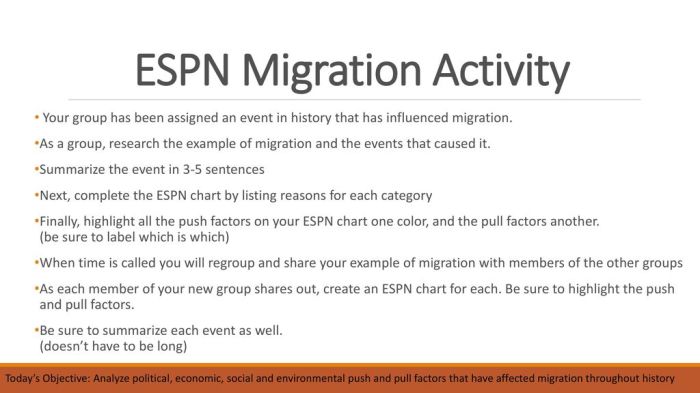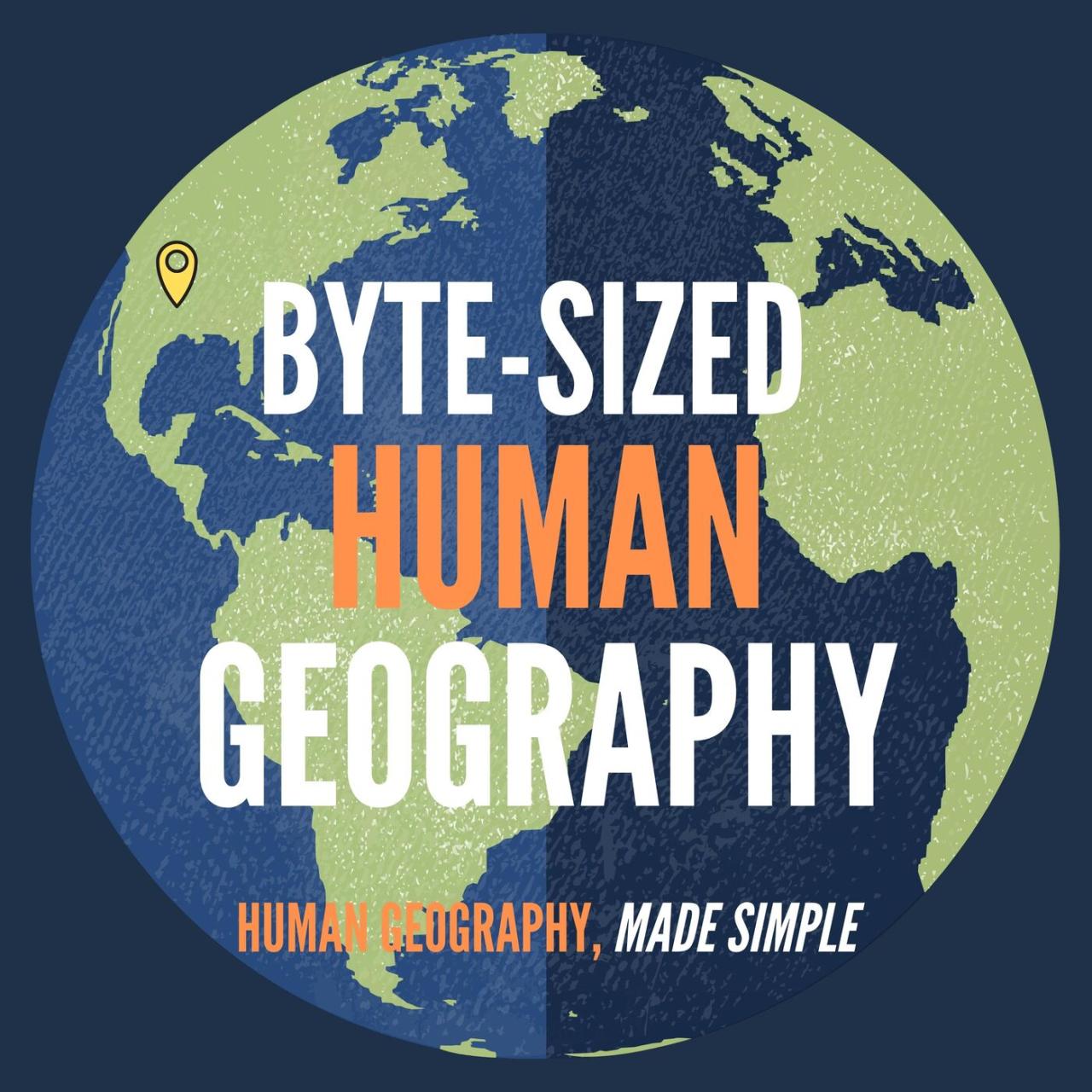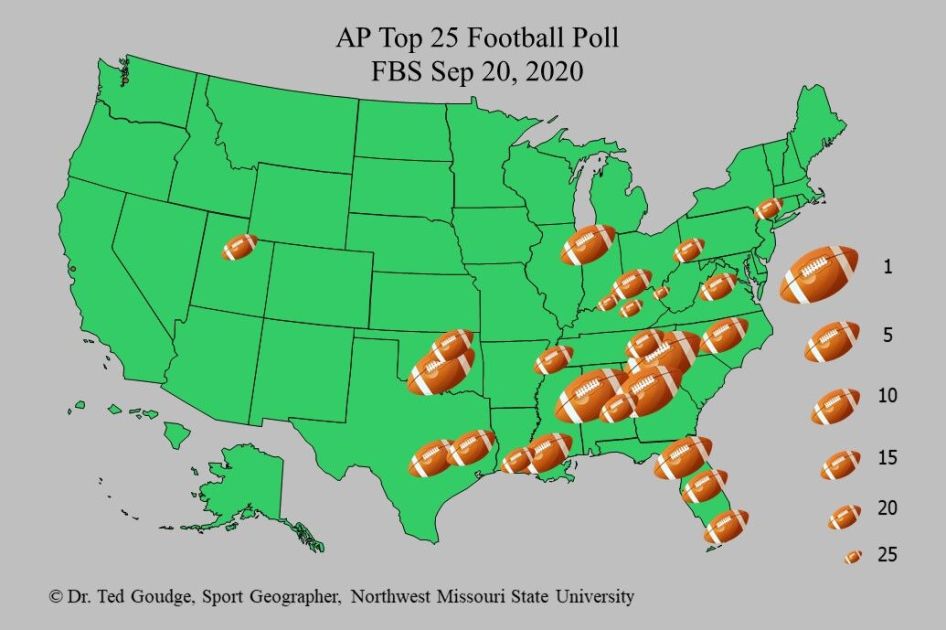What is espn in geography – Embark on a journey into the realm of ESPN in geography, where we unravel its definition, explore its diverse types, and delve into its myriad applications. From shaping geographical studies to unlocking new avenues of research, ESPN stands as a powerful tool that has transformed our understanding of the world around us.
Delving deeper, we examine the challenges and ethical considerations associated with ESPN’s usage, while also speculating on its promising future directions. As geography continues to evolve, ESPN will undoubtedly play an increasingly pivotal role in advancing our knowledge and solving complex geographical problems.
ESPN in Geography

ESPN (Environmental Sensitivity Potential Index) is a geographical index that measures the sensitivity of an area to environmental changes. It is a composite index that takes into account a variety of factors, including land use, soil type, slope, and vegetation cover.
ESPN in geography refers to the Environmental Sensitivity Potential Index, which measures the susceptibility of an area to environmental degradation. For instance, a study by Ravens Quest Art of Zoo demonstrates how ESPN can be used to assess the environmental impact of human activities in a given region.
By understanding ESPN, we can make informed decisions to protect our environment.
ESPN is used by geographers to identify areas that are most at risk from environmental degradation. It can also be used to develop strategies for mitigating the impacts of environmental change.
ESPN’s Impact on Geographical Studies
ESPN has had a significant impact on geographical studies. It has helped geographers to better understand the relationship between environmental factors and human activities. It has also helped to identify areas that are most at risk from environmental change.
ESPN as a Tool for Geographical Analysis
ESPN is a valuable tool for geographical analysis. It can be used to identify areas that are most at risk from environmental change, and to develop strategies for mitigating the impacts of environmental change.
Types of ESPN: What Is Espn In Geography

ESPN (Ecological Site Potential Natural Vegetation) is a classification system that groups ecological sites based on their potential natural vegetation. There are different types of ESPN used in geography, each with its own advantages and disadvantages.
Types of ESPN
- Potential Natural Vegetation (PNV): PNV is the vegetation that would occur on a site if it were undisturbed by human activity. PNV is used to identify the ecological potential of a site and to develop management plans that are consistent with the site’s natural vegetation.
- Reference Vegetation: Reference vegetation is a type of PNV that is used to represent the desired future condition of a site. Reference vegetation is used to develop management plans that are designed to restore or maintain the site’s natural vegetation.
- Current Vegetation: Current vegetation is the vegetation that is currently present on a site. Current vegetation is used to assess the condition of a site and to develop management plans that are designed to improve the site’s vegetation.
Each type of ESPN has its own advantages and disadvantages. PNV is the most accurate representation of a site’s ecological potential, but it can be difficult to determine in areas that have been heavily disturbed by human activity. Reference vegetation is a more realistic goal for management, but it may not be possible to achieve in all cases.
Current vegetation is the easiest to assess, but it may not be an accurate representation of the site’s potential.
ESPN is a valuable tool for geographers and land managers. It can be used to identify the ecological potential of a site, to develop management plans that are consistent with the site’s natural vegetation, and to assess the condition of a site.
Applications of ESPN in Geography

ESPN, or Earth Surface Processes and Landforms, is a vital tool in geography that provides insights into the Earth’s physical and human characteristics. Its applications extend to various fields of study, including geomorphology, hydrology, and human geography.
Physical Geography
In physical geography, ESPN helps researchers understand the processes that shape the Earth’s surface. It allows them to analyze landforms, such as mountains, rivers, and glaciers, and investigate how they have evolved over time. ESPN also aids in studying natural hazards, such as earthquakes and floods, and assessing their impact on the landscape.
Human Geography
ESPN plays a crucial role in human geography by helping researchers understand the relationship between humans and their environment. It enables them to study how human activities, such as agriculture, urbanization, and resource extraction, have shaped the Earth’s surface. ESPN also provides insights into the distribution of human populations and their impact on the environment.
Solving Geographical Problems
ESPN has been instrumental in solving various geographical problems. For instance, it has been used to identify areas at risk of landslides, design flood control systems, and plan for sustainable land use. ESPN has also been used to assess the impact of climate change on the Earth’s surface and develop strategies to mitigate its effects.
Challenges of Using ESPN in Geography

Despite its advantages, using ESPN in geographical studies comes with certain challenges. These include:
Limitations of ESPN
ESPN can be limited by its accuracy and reliability. The data used to create ESPN may not always be up-to-date or complete, which can lead to errors in analysis. Additionally, ESPN can be affected by bias, either intentional or unintentional, which can skew the results.
Ethical Considerations
The use of ESPN in geography raises ethical concerns. These concerns include the potential for discrimination, the violation of privacy, and the misuse of data.
- Discrimination:ESPN can be used to create maps that identify and target specific groups of people. This information could be used for discriminatory purposes, such as redlining or gentrification.
- Privacy:ESPN can collect and store personal information, such as location data. This information could be used to track people’s movements or to create profiles of their behavior.
- Misuse of Data:ESPN can be used to create maps that are misleading or inaccurate. This information could be used to manipulate public opinion or to make decisions that are not in the best interests of the public.
It is important to be aware of these challenges and to take steps to mitigate them. This includes using ESPN with caution, being critical of the data, and respecting the privacy of individuals.
Future Directions of ESPN in Geography

The future of ESPN in geography holds immense potential for advancing geographical research and expanding its applications in emerging fields. As technology continues to evolve, ESPN will likely play an increasingly significant role in various aspects of geographical analysis.
One key direction for ESPN in geography is the integration of real-time data. By incorporating live data feeds from sensors, satellites, and other sources, ESPN can provide geographers with up-to-date information on environmental changes, land use patterns, and human activities.
This real-time data can be used to monitor and respond to natural disasters, track the spread of diseases, and inform decision-making processes.
Emerging Fields of Geography, What is espn in geography
ESPN is also expected to find applications in emerging fields of geography, such as:
- Climate change research:ESPN can be used to model and predict the impacts of climate change on ecosystems, sea levels, and human populations.
- Urban planning:ESPN can help planners optimize land use, design sustainable cities, and manage transportation systems.
- Health geography:ESPN can be used to study the relationship between environmental factors and human health, and to identify areas at risk for disease outbreaks.
User Queries
What are the main types of ESPN used in geography?
There are various types of ESPN employed in geography, including qualitative ESPN, quantitative ESPN, and geospatial ESPN. Each type offers unique advantages and is tailored to specific research objectives.
How is ESPN used to study physical geography?
ESPN plays a crucial role in analyzing physical geographical phenomena, such as landforms, climate patterns, and natural resource distribution. It allows researchers to visualize and understand the spatial relationships between these elements, leading to a deeper comprehension of Earth’s physical processes.
What are the ethical considerations associated with using ESPN in geography?
The use of ESPN raises ethical concerns related to data privacy, confidentiality, and potential misuse. Researchers must adhere to ethical guidelines and ensure that data is handled responsibly and in accordance with informed consent.
